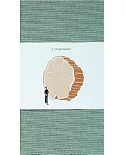Van de Velde’s ceramics have been documented as early as 1901/02, when after settling in Berlin he prepared designs for the stoneware manufacturers in the Westerwald on commission from the
Prussian Ministry for Commerce, and there is no evidence yet of earlier stoneware works. In Weimar after 1902 ceramics became a very important area of work for the artist in his new function
as "advisor for industry and crafts" for the Grand Duchy of Saxony-Weimar. He was intensely active with the potteries of Buergel and the porcelain manufacturers of Ilmenau and Jena-Burgau.
Beginning in 1903 he also designed several pieces of delicate tableware for the royal factory in Meissen. As with carpet weaving, after 1907/08 ceramics became a subject of study in van de
Velde’s new Kunstgewerbeschule in Weimar, where his handicrafts seminar had already demonstrated great success in the production of ceramics. As a result, it is often difficult to distinguish
between the works of students and those of the teacher in this field – a fact abundantly proven by the consistently broad array of Henry van de Velde’s offerings on the market. Bound in blue
cloth, and at a length of circa 650 pages, this volume encompasses more than 2000 illustrations. As with volume II, numerous references to known potters and firms have been included.





















